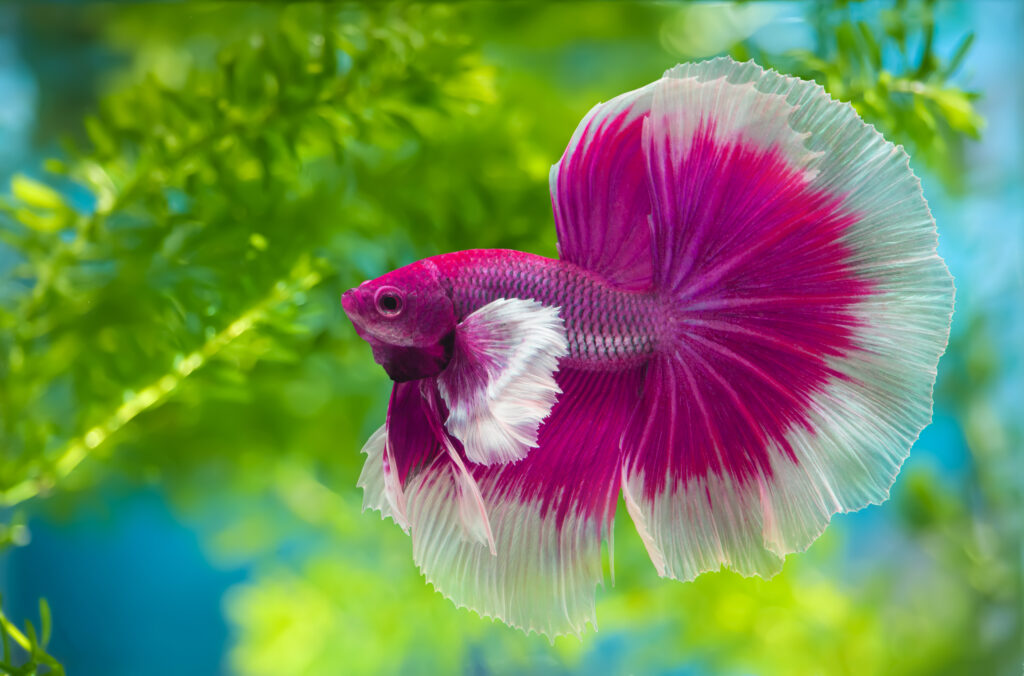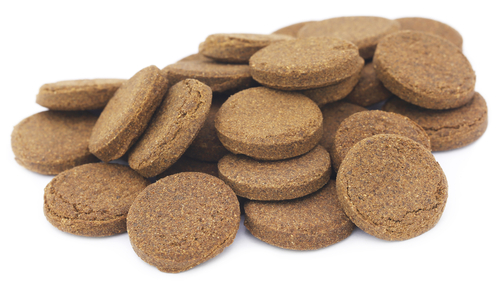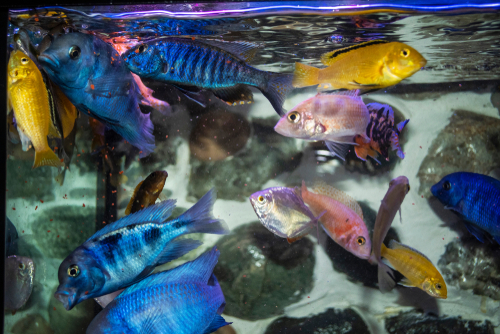Keeping neon tetras with betta fish can be a visually stunning and harmonious undertaking if approached correctly. With their vibrant colors and active swimming behavior, neon tetras can be a lively addition to a betta’s environment.
However, you must focus on the specific needs and behaviors of each species to ensure they coexist peacefully. Bettas are known for their territorial nature, especially males, which means adequate space and proper tank conditions are non-negotiable for the wellbeing of both species.
Understanding the social nature of neon tetras is equally important as they thrive in groups, known as schools, and can exhibit signs of stress if kept in insufficient numbers.
Additionally, the aquarium setup must cater to the needs of both types of fish, with plenty of hiding spaces and a plant-rich environment to simulate their natural habitats.
While neon tetras prefer to swim in the middle layers of the water, bettas often explore all levels of the tank, including the surface for air due to their labyrinth organ. This complementary usage of space can help minimize confrontations.
Contents
Key Takeaways on Neon Tetras with Betta
- A carefully planned tank with ample space can facilitate the cohabitation of neon tetras and betta fish.
- A dynamic environment with plants and hiding spots is crucial for reducing stress and promoting natural behaviors.
- Observing and managing the dietary needs, along with monitoring interactions, are key to maintaining a balanced community aquarium.
You also don’t want to miss these other most sought posts on this category:
Understanding Betta Fish Behavior
In my experience of keeping and studying fish, I’ve found that understanding betta fish behavior is essential for successful aquarium management, particularly when considering tank mates like neon tetras.
Temperament and Compatibility
Betta fish, also known as Siamese fighting fish, possess a complex temperament. Males are particularly territorial and can show aggression, especially in confined spaces.
Female bettas are generally less aggressive than males, but they can also exhibit territorial behavior when stressed. It’s crucial to assess betta temperament when introducing them to community tanks to ensure compatibility.
Aggression and Peaceful Coexistence

Aggression in bettas is often marked by fin flaring, chasing, and nipping. However, peaceful coexistence is possible in a well-planned environment.
Providing ample space and hiding spots can significantly reduce stress-induced aggression. Male bettas are typically more aggressive than females, making the selection of a betta for a neon tetra tank an important decision.
Behavioral Signs
Understanding and observing betta behavior can alert to potential issues in the tank. These signs include:
- Fin Flaring: Bettas flare their fins as a display of dominance or a defensive gesture.
- Swimming Patterns: Erratic swimming or constant chasing often indicates stress or aggression.
- Fin Nipping: If a betta repeatedly nips at tank mates or its own reflection, it’s a clear sign of aggression.
By keeping an eye out for these behaviors, you can take proactive measures to maintain a harmonious aquarium.
Neon Tetra Care Essentials
Caring for neon tetras involves understanding their schooling nature, providing a balanced diet, and being vigilant about their health. Let me guide you through the essentials of neon tetra care.
Schooling and Social Behavior
Neon tetras are schooling fish and thrive in groups. I recommend keeping at least 8 neon tetras together to ensure they display their natural, active behavior. These fish are more confident and engaged when they have the company of their own species, and this helps to reduce stress levels significantly.
Diet and Nutrition

Neon tetras have specific dietary requirements to keep them healthy. A varied diet comprising high-quality flake food, bloodworms, brine shrimp, and daphnia is optimal. Feeding them two to three times daily, with the amount they can consume in about three minutes, will maintain their appetite without overfeeding.
Health Monitoring
To ensure neon tetras are in good health, keep a close eye on their behavior and appearance. Sudden loss of appetite or changes in swimming patterns can be signs of poor health. These fish should exhibit bright colors and active swimming. Any deviation from this could indicate that a closer examination of water conditions or health is necessary.
Aquarium Setup and Requirements
When setting up an aquarium for neon tetras and betta fish, prioritize on creating a harmonious environment that caters to the needs of both species. Ensuring that tank size, water parameters, and filtration are properly addressed is crucial for their health and wellbeing.
Tank Size and Water Capacity
Tank size is fundamental. Neon tetras are schooling fish; a group of at least 8 is necessary for their social behavior, necessitating a minimum 15-gallon tank.
However, for optimum space and comfort, especially when housing them with a betta, I advocate for a 20-gallon tank or more. A sufficient water capacity allows for stable water conditions, necessary for reducing stress and preventing aggression.
Water Parameters and Conditions
As for water conditions, both species thrive in a specific range of water parameters. Maintain a neutral pH around 7.0, but it can safely range from 6.0 to 7.0. The temperature is crucial; I aim for a middle ground of 76-80°F (24-27°C) to suit both neon tetras and bettas.
Bettas require warmer water, so never let the temperature drop below 74°F (23°C) or rise above 82°F (28°C). For neon tetras, the acceptable range is slightly wider, typically from 72-78°F (22-26°C). Carefully monitor these conditions to ensure a comfortable environment for both fish types.
Filtration and Water Quality
Lastly, quality filtration is a must. Use a filtration system that keeps the water clean and maintains the necessary water quality without creating excessive flow, as bettas prefer calmer waters.
A 5-gallon tank, often suggested as a minimum for a single betta, simply isn’t suitable when combining with neon tetras. I also perform regular water changes to control the build-up of nitrates and keep the ecosystem healthy.
Creating a Harmonious Habitat
In establishing a peaceful cohabitation between neon tetras and betta fish, focus on designing an environment that caters to their natural behavior and requirements. This includes carefully selecting plants, decorations, and lighting to create sheltered spaces and maintain water quality.
Plants and Decorations
Incorporating live plants into the aquarium bring a slice of the natural ecosystem into the habitat. Plants like Anubias or Java Fern are excellent because they don’t require intense lighting and can thrive in the preferred water parameters of both bettas and neon tetras.
For decorations, smooth rocks and driftwood can add visual appeal and functionality to the space.
Hiding Spots and Shelter
Creating ample hiding spots is crucial for reducing stress and aggression. Use plants with broad leaves to provide shade and seclusion. Additionally, incorporate driftwood or hollow decorations to provide safe retreats, especially important for bettas, who are more territorial.
Substrate and Lighting
Choosing the right substrate is a foundational aspect. A dark, fine-grained substrate can simulate a natural riverbed while being gentle on the sensitive barbels of neon tetras.
As for lighting, it should be moderate to highlight the vibrant colors of the fish without causing undue stress. Adjustable LED lights allow me to find the perfect balance to support plant growth and illuminate the fish beautifully.
Feeding and Dietary Management

When managing the diets of both betta fish and neon tetras, focus on their nutritional requirements and natural feeding habits to maintain their health when they live together.
Betta and Neon Tetra Diet
Bettas are predominantly carnivorous, requiring a diet rich in protein. Their natural diet includes insects and larvae, such as mosquito larvae, a vital live food option.
In contrast, neon tetras are omnivores and have a more varied diet that includes plant matter alongside protein sources. For the neon tetra, high-quality flake food or micro pellets that are designed for small tropical fish offer the right balance.
- Betta Food: High-protein pellets, frozen or live brine shrimp, daphnia, and mosquito larvae.
- Neon Tetra: Tropical flakes, micro pellets, brine shrimp, and occasionally blood worms for variety.
Note: Ensure any live foods are sourced from reputable suppliers to avoid introducing diseases to the aquarium.
Feeding Schedule and Portions
Feed both species twice a day, following a controlled feeding schedule to prevent overfeeding and maintain water quality. Give the betta a few pellets or an equivalent amount of live food, which they can consume within a couple of minutes.
For the neon tetras, sprinkle a pinch of flake food or micro pellets, adjusting the amount so all food is consumed quickly and none is left to decay in the tank.
- Bettas: 2-3 pellets or an equivalent amount of live food per feeding.
- Neon Tetras: A small pinch of flakes or pellets per feeding.
Important: Watch closely during feeding times to make sure each fish gets its share and to monitor their health and behavior.
Tank Mate Selection

When selecting tank mates for a betta and neon tetras, focus on ensuring compatibility, minimizing stress, and maintaining a peaceful aquarium environment.
Here’s how to decide on suitable companions.
Compatible Invertebrates
Shrimp and snails work well with betta fish and neon tetras. They are generally peaceful and can even help keep the tank clean.
- Cherry Shrimp: These colorful invertebrates are not only vibrant but also small and non-aggressive, making them good tank mates. They need plenty of hiding places though, as bettas might see them as a snack if they’re too exposed.
- Ghost Shrimp: A more translucent option, ghost shrimp are hardy and tend to keep to themselves, which can minimize conflicts in a community tank.
Snails, like the Nerite or Mystery snail, coexist peacefully with both bettas and neon tetras. Their hard shells provide protection from the occasional nip of a curious betta.
Alternative Fish Companions
Choosing fish companions requires attention to the specific needs and behaviors of the species involved.
- Ember Tetras: These are small, peaceful fish that can live harmoniously with neon tetras and add a splash of orange to the tank. Their calm nature makes them less likely to provoke the betta.
- Corydoras: As bottom dwellers, corydoras are excellent for community tanks. They will mostly stay out of the betta’s way, and their sociable nature complements neon tetras.
It is essential to ensure the tank is spacious enough and the environment is well-planted, providing hiding spaces for all inhabitants. This reduces stress and potential aggression.
Handling Conflicts and Preventing Stress
In keeping a mixed-species aquarium with Siamese fighting fish (bettas) and neon tetras, minimizing stress and managing conflict are pivotal for peaceful coexistence. My approach hinges on understanding triggers and putting in place proactive measures.
Identifying Sources of Stress
The first step in conflict resolution is recognizing the aggression triggers that can lead to stress in both neon tetras and bettas. Aggression in bettas may manifest as flaring gills, chasing, or biting, often stemming from their territorial nature.
In contrast, neon tetras can become stressed due to inadequate school size or territorial invasions. To mitigate these issues, ensure that each fish species has ample space and proper living conditions. Also monitor their behavior closely for any signs of stress, such as erratic swimming or hiding, and adjust their environment accordingly.
Implementing a Backup Plan
Despite your best efforts, conflicts may still arise. This is when having a backup plan is crucial. My strategy includes:
- Multiple hiding spots: Providing ample hiding places helps reduce direct line-of-sight aggression.
- Spare tank: Having a spare tank at the ready allows for quick separation if conflicts escalate beyond control.
- Observation: Constant monitoring, particularly during the initial introduction phase or after any tank changes, gives me the opportunity to intervene early.
By staying alert and prepared, you can tackle any stress-related issues that may develop, ensuring a harmonious environment for both bettas and neon tetras.
Expert Tips for First-Time Betta and Neon Tetra Keepers
When I first ventured into fishkeeping, especially with species like betta and neon tetras (Paracheirodon innesi), several key practices played a pivotal role in creating a harmonious tank environment.
Here are my expert tips to ensure a smooth introduction of betta fish with neon tetras for first-timers:
- Choose the Right Tank Size: Start with a tank that holds a minimum of 15 gallons. This size provides enough space for both the betta and the neon tetras to coexist without stress.
- Introduce in Proper Order: Add the neon tetras to the tank first. This allows them to get comfortable before introducing the betta, which may reduce territorial behavior from the betta.
Tank Setup and Water Conditions:
| Feature | Requirement |
| Water Temperature | 76-81°F (24-27°C) |
| pH Level | 6.5-7.5 |
| Water Hardness | 5-20 dH |
Adding Indian almond leaves can mimic the natural habitat of the betta providing tannins that are beneficial and help maintain a healthy environment.
- Create Plenty of Hiding Spaces: Use live plants like java fern or anubias to create shelters. This prevents stress and aggression as fish can retreat to their own space when needed.
- Properly Acclimate Your Fish: Take the time to gradually acclimate both fish species to the tank’s water parameters to reduce shock and stress.
Remember, the key to a thriving fish community lies in understanding and catering to the specific needs of your aquatic pets. By following these guidelines, your foray into keeping betta and neon tetra together can be fulfilling and enjoyable.
Maintenance and Ongoing Care
In providing the best possible environment for neon tetras and betta fish, prioritize regular maintenance and vigilant care. My aquarium routine focuses on water condition management and consistent health checks to keep these species thriving.
Regular Cleaning and Water Changes
Perform weekly cleaning to prevent the build-up of harmful substances. This routine includes:
- Siphoning the Gravel: Gently vacuum the substrate to remove waste and uneaten food.
- Changing the Water: Replace 20-25% of the water weekly, ensuring you match the temperature and pH to avoid shocking the fish.
Monitoring Fish Health and Water Quality
To maintain optimal health and water quality, my approach includes the following:
- Testing the Water: Using a water testing kit, check for ammonia, nitrite, and nitrate levels, as well as pH balance regularly.
- Fish Observations: Watch for any signs of stress or illness, such as unusual swimming patterns or changes in appetite.
- Feeding: Provide a balanced diet of high-quality fish food, tailored to the dietary needs of both neon tetras and betta fish, feeding them only as much as they can consume in a few minutes.
By adhering to these principles, you will find success in maintaining a harmonious and healthy aquarium for neon tetras and betta fish.
Frequently Asked Questions
What are the tank size requirements for housing neon tetras with a betta fish?
A tank that provides ample space is crucial. For a betta and a small school of neon tetras, I recommend a tank size of at least 20 gallons. This accommodates the betta’s territorial nature and gives neon tetras enough room to swim.
What type of tank environment is suitable for both betta fish and neon tetras to coexist?
Both species thrive in a tank with stable water conditions, a temperature range of 74-80°F, and a pH around 6.5-7.0. Ample plants and hiding spots can help mimic their natural habitat and reduce stress.
How should one introduce neon tetras to a tank with a betta to minimize aggression?
Slow and careful acclimation is key. Quarantine neon tetras first to ensure they’re disease-free. Then, introduce them into the betta tank using a method like the drip acclimation to equilibrate water parameters.
What are the dietary needs and feeding guidelines when caring for both betta fish and neon tetras?
Bettas are carnivorous and neon tetras are omnivorous. Provide a diet of high-quality pellets, freeze-dried bloodworms, and brine shrimp. It’s important to feed in moderation to prevent overeating and maintain water quality.
How can one manage aggression if a betta fish starts chasing or attacking neon tetras?
Should aggression occur, consider rearranging the tank to disrupt the betta’s perceived territory. Adding more plants or decorations can provide hiding spots for tetras. Persistent aggression may require separating the fish.
What are the signs of stress to look out for in neon tetras when kept with betta fish?
Signs of stress in neon tetras include erratic swimming, faded colors, and hiding excessively. If you observe these behaviors, take immediate action to address water quality, tank environment, or harassment by the betta.

Ian Sterling, founder of Fishlab.com, began his aquarium journey over 30 years ago, driven by a deep fascination for fish and their diverse personalities. His website, Fishlab.com, is dedicated to making fishkeeping accessible and enjoyable, offering beginner-friendly guidance, expert insights, and a community for aquarists to connect and share experiences.


